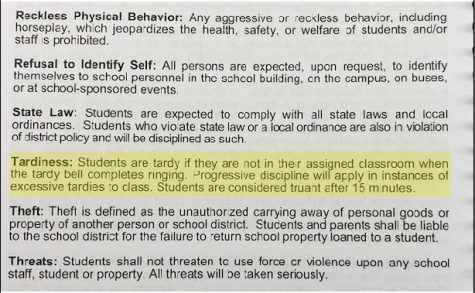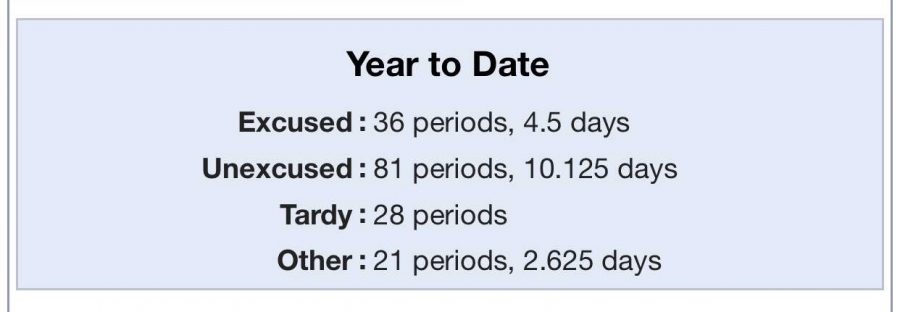A “Chronic” Problem
Taking a look at attendance in Tahoma High School
June 7, 2018
At the beginning of the 2016-2017 school year, each class was brought into the gym for an attendance talk. Administrators discussed the importance of being present at school and explained that Washington State was ranked second lowest in the nation for attendance. Since then, Tahoma has pushed students in order to increase school attendance, but how well has that worked out? Currently, Tahoma sends letters home to students whose attendance raises concerns. A student will receive a letter home if they are categorized as “extreme chronic” — absent from more than 20% of a month. Students will also receive a letter home if they miss 10-20% of a month and have either failing or D grades.
Although this year’s national report has not been released, I looked into Tahoma’s absence statistics from this year and compared them to last year’s. I first chose to look at the total amount of absences gathered at 140 school days from each school year. After accounting for the increased school population, the data showed that this year’s absence rate is very similar to last year’s. The statistics show that last year in a school with 1800 students, there were 2481 total absences at the 140 day mark. If you average that out, it comes to each student missing 1.378 days. When comparing that to this year’s stats, there have been 3400 absences in our school of 2600 students. That averages out to 1.308 days missed per student. Ultimately, this year’s average absence rate is very similar to last years, and even slightly lower. When looking at monthly attendance rates per student, the number of students who are considered “chronically absent” has decreased from 27% to 24% this year. Although attendance rates as a whole are similar to last year, the drop in chronically absent students is a huge step in increasing attendance.

Another cause for concern that has been raised about attendance is our school’s tardy policy. As SHown in the photo above, Tahoma’s tardiness policy states that “students are considered truant after 15 minutes” of the bell ringing. This raises questions about whether the policy is effective, or if it really gives incentive for tardy students to skip if they are going to miss that tardy window. With classes that are 79 minutes long, a student can be present for over 80% of the class and still be absent. To understand the point of view from students, I ran a survey. The results shows that although 58.1% of students agree with the tardy policy, 24.2% of students have skipped either first or fifth period because they knew they would be more than 15 minutes late. This is surprising data because more than half of students agree with the policy, but nearly ¼ of students have chosen to skip an entire class because of that same policy. Delving deeper into the reasons behind tardiness and absences, I took a look into students who drive to school. Of the students who drive to school, 55.4% of students have said that their attendance has not been impacted and 19.3% of students say that their attendance has improved since they have began driving. What is slightly concerning, however, is that 25.3% of students have said that their attendance has been impacted negatively.
Although some complain about Tahoma’s policy, when comparing it to nearby high schools, all the schools’ policies are similar. Auburn Mountainview High School’s policy is that students are considered absent after 10 minutes into class. Although this is less time than Tahoma’s 15 minutes, when you account for the length of the classes — 50 minutes compared to Tahoma’s 79 minutes — you see that Mountainview students are considered absent after 20% of the class has passed whereas Tahoma marks you absent after 19% of the class has passed. This stays fairly consistent with other schools as well. Both Lindbergh High School in Renton and Kenwood High School consider their students absent after 18% of the class has passed. It appears that Tahoma has a standard policy when comparing it to neighboring schools. This, along with students’ opinions about the tardy policy, show that the current tardy policy is not of great concern when looking at attendance rates.
To find out more about student attendance, I talked to our school’s attendance office. I asked if they personally saw a drop off of students arriving after the 15 minute tardy window, and they said they never see a lull during any part of the day. They said that there is a constant influx of students throughout the day. They even shared that they have had students show up at 2:05 pm — five minutes before the end of the school day. These stories show that students are dedicated to showing up and that they value their education, not matter how late they may be.
Although this year has not shown a huge overall change in attendance, it seems as though students are taking initiative, and trying to come to school. Between the drop of chronic absences along with the slight increase in student attendance, it appears that students are making an effort to be present, and take charge of their education.



